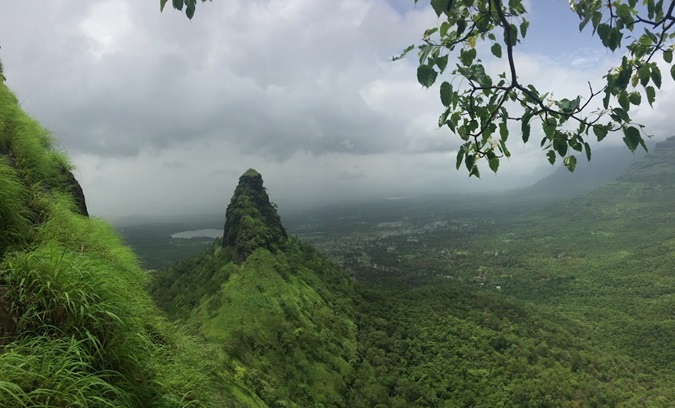Bhimashankar Wildlife Reserve: A Haven for Nature Enthusiasts
Bhimashankar Wildlife Reserve
Bhimashankar Wildlife Reserve, located in the state of Maharashtra, India, is a significant natural sanctuary nestled in the Western Ghats. It is renowned for its rich biodiversity, scenic beauty, and cultural heritage. The reserve is situated in the Sahyadri hills, approximately 125 kilometers from Pune and 223 kilometers from Mumbai. Bhimashankar is home to a diverse range of plant species, including dense forests of teak, bamboo, and other indigenous trees. The area is rich in medicinal plants and endemic species. The reserve is particularly famous for the Indian Giant Squirrel (Ratufa indica elphistoni), which is the state animal of Maharashtra. Other wildlife includes leopards, sambar deer, barking deer, wild boar, and various species of reptiles and birds.
Attractions in Bhimashankar Wildlife Reserve
Bhimashankar Temple: The Bhimashankar Jyotirlinga is an ancient temple dedicated to Lord Shiva, which is one of the 12 Jyotirlingas in India, and attracts pilgrims from all over the country. The temple’s architecture and serene environment add to the spiritual experience.
Hiking and Trekking: The reserve offers numerous trails for hiking and trekking, providing opportunities to explore its natural beauty. Popular trails include the Shidi Ghat (Ladder Route) and Ganesh Ghat.
Bird Watching: Bird enthusiasts can spot a variety of species, including the Malabar Grey Hornbill, Green Pigeon, and many migratory birds.
Best Time to Visit- The best time to visit Bhimashankar Wildlife Reserve is during the cooler months from October to March. The monsoon season, from June to September, also enhances the greenery and water levels, making the landscape lush and vibrant.
Bhimashankar Wildlife Reserve at night
At night, Bhimashankar Wildlife Reserve transforms into a mysterious and enchanting realm, offering a unique experience for visitors. Here’s what you can expect during a nocturnal exploration of the reserve.
Also Read- Malshej Ghat Hill station-A Picturesque destination in Deccan Plateau
Wildlife Encounters
Nocturnal Animals: As darkness falls, nocturnal creatures such as leopards, civets, jungle cats, and owls become active. Spotting these elusive animals adds an element of thrill to nighttime safaris. Night Sounds: The jungle comes alive with the sounds of insects chirping, frogs croaking, and nocturnal birds calling. The symphony of night sounds creates an immersive experience in the wilderness.
Stargazing
Clear Skies: Away from city lights, the night sky over Bhimashankar Wildlife Reserve offers spectacular views of stars, constellations, and celestial phenomena. Milky Way: On clear nights, the Milky Way stretches across the sky, casting a luminous glow over the landscape. Observing the Milky Way can be a mesmerizing experience for astronomy enthusiasts.
Guided Night Safaris
Expert Guides: Experienced naturalists and guides lead nighttime safaris, providing insights into the nocturnal behavior of wildlife and sharing fascinating anecdotes about the reserve. Spotlighting: Night safaris often involve spotlighting techniques to illuminate wildlife in the darkness, offering memorable sightings of animals in their natural habitat.
Ethereal Landscapes
Moonlit Scenery: The landscape of Bhimashankar takes on an ethereal beauty under the moonlight, with silhouetted trees, tranquil streams, and rugged terrain bathed in a soft, silver glow. Night Photography: Photography enthusiasts can capture stunning images of the reserve’s landscapes illuminated by moonlight, creating captivating compositions.
Exploring Bhimashankar Wildlife Reserve at night offers a captivating blend of wildlife encounters, celestial marvels, spiritual experiences, and breathtaking landscapes, making it an unforgettable journey into the heart of nature’s nocturnal realm.
Bhimashankar Wildlife Reserve glowing forest
The concept of a “glowing forest” typically refers to bioluminescent phenomena, where living organisms emit light through chemical reactions. There are some reports that Bimashankar Wildlife Reserve glows in the dark during the rainy seasons However, there are no documented occurrences of bioluminescent forests in Bhimashankar Wildlife Reserve or in the surrounding Western Ghats region. Bioluminescence is a phenomenon where living organisms produce light through chemical reactions, commonly observed in certain marine organisms like plankton, jellyfish, and some insects.

Bioluminescence is more commonly observed in marine environments, particularly in coastal regions, where certain organisms such as phytoplankton, jellyfish, and fireflies produce light. In terrestrial environments like forests, bioluminescence is relatively rare and typically associated with specific species of fungi, insects, and other small organisms.
While Bhimashankar Wildlife Reserve boasts a diverse range of flora and fauna, including lush forests, stunning landscapes, and unique wildlife, bioluminescent phenomena are not known to occur naturally in this region. Visitors to Bhimashankar Wildlife Reserve can still enjoy the enchanting beauty of its forests, especially during daytime treks and nature walks, where they can explore the rich biodiversity and scenic landscapes of this protected area in the Western Ghats.
How to Reach Bhimashankar Wildlife Reserve
Reaching Bhimashankar Wildlife Reserve involves a combination of road and trekking routes due to its location in the Western Ghats.
By Road
From Pune-Bhimashankar is approximately 125 kilometers away from Pune. You can drive or take a bus from Pune to Bhimashankar. The journey takes around 3-4 hours depending on traffic and road conditions. The route passes through towns like Manchar and Rajgurunagar before reaching Bhimashankar.
From Mumbai- Bhimashankar is around 223 kilometers from Mumbai. You can drive or take a bus from Mumbai to Bhimashankar. The journey usually takes around 5-6 hours. The route goes via the Mumbai-Pune Expressway and then through Manchar and Rajgurunagar to reach Bhimashankar.
Nearby Railway Station and Airport
The nearest railway station to Bhimashankar is Pune Junction Railway Station, which is well-connected to major cities across India. Pune also has an airport, Pune Airport (Lohegaon Airport), which is the nearest airport to Bhimashankar. From Pune, you can continue your journey by road or trekking as mentioned above. Once you reach Bhimashankar village, you can explore the wildlife reserve and its surroundings on foot or by hiring local jeeps or vehicles for transportation within the area.



